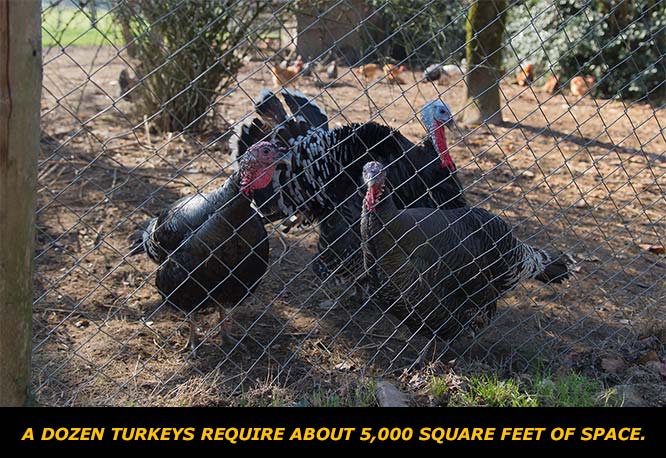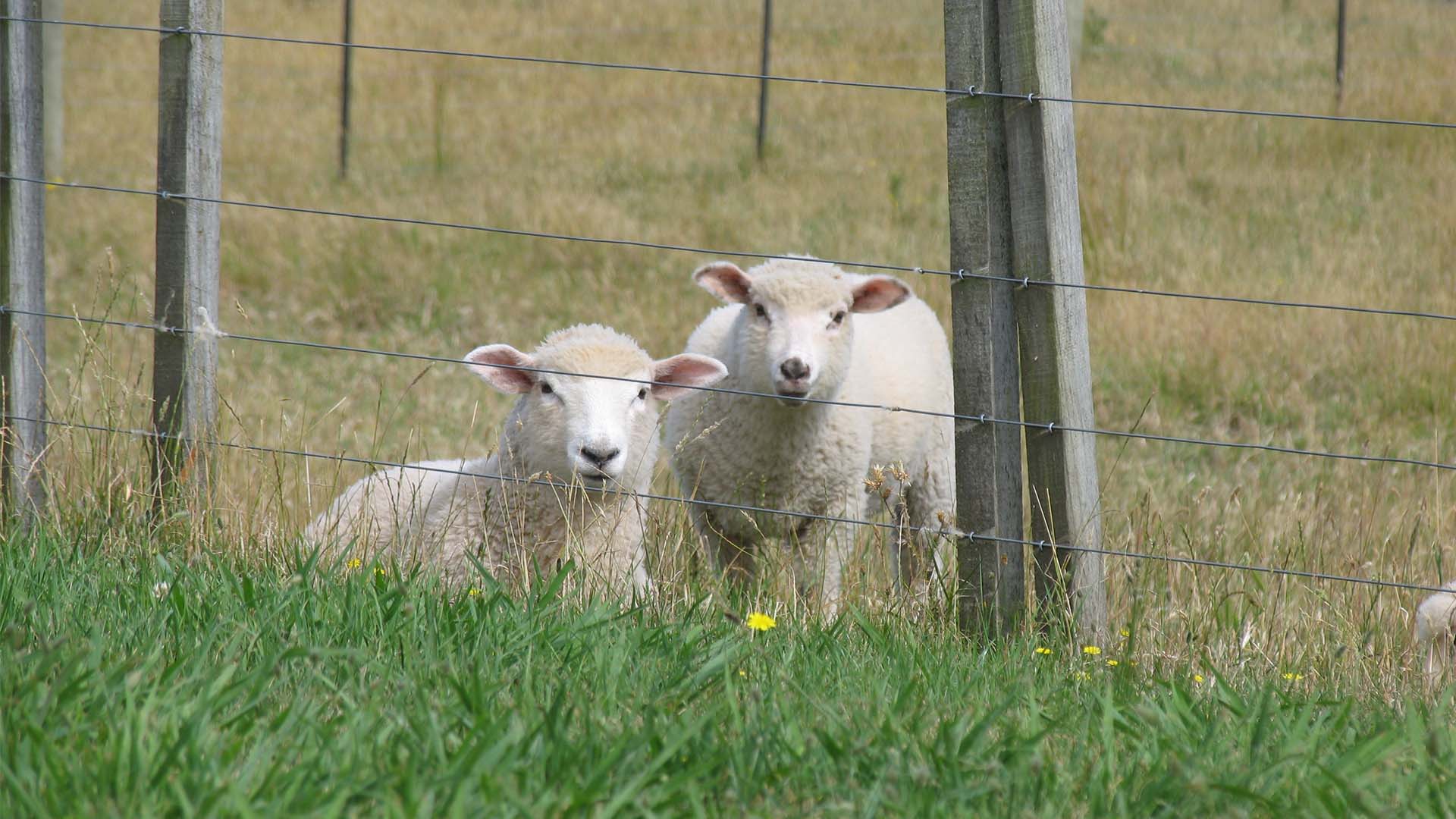
Unless you have a poultry operation, raising turkeys may be an afterthought for your larger livestock plans, but these smart, curious and personable birds can be perfect for an unused section of your property. Turkeys are almost exclusively raised for the meat, but they can also provide eggs and their waste can be used as garden fertilizer.
- Other Names:Breeds include Bourbon Reds, Narragansetts, Broad-breasted Whites, Broad-breasted Bronzes, White Holland and Standard Bronze
- Male Size Range: 43 inches to 45 inches (length), 5 lb to 24 lb
- Female Size Range: (Same range for both genders)
- Source: North America
- Established in: Domesticated in pre-Columbian Mexico
- Ideal Habitat: Grassland, shrub areas or forest
- Fencing: Chain link with electric line
- Incubation Period: 28 days
- Raised for: Meat, eggs

All About Turkeys
Most Americans and Canadians are familiar with turkeys, a common, large bird that frequents rural areas. Our Thanksgiving holidays and Christmas dinners often include turkeys as the main course. Turkey deli meat is a favorite, and turkey burger is a low-cholesterol alternative to beef.
With the turkey’s versatility as a food product, these animals have been domesticated for centuries. Still, most farmers and homesteaders aren’t too sure about their suitability as backyard livestock. It turns out that they’re a great addition to most farms. Under most circumstances, they can be housed with chickens as long as you provide for the fact that they’re bigger than chickens.
Though there is a wide variety of breeds, pretty much every turkey has the same needs, including a large run, a roosting coop, food and water. Expect to dedicate about 5,500 square feet to raise a dozen turkeys (assuming you’re planning a non-industrial turkey operation).
Turkeys can comfortably grow in just about any area in the U.S. and Canada and enjoy winter conditions assuming they have access to unfrozen water. In hot and humid or desert areas, water and shade are the most important needs to address.
Turkeys that are raised alongside chickens may be exposed to blackhead, a disease that chickens carry but doesn’t affect their health. For turkeys, blackhead is often fatal. Other health issues turkeys may face include avian influenza, brooder pneumonia and blue comb. Additional problems that may arise include cannibalism (due to crowded conditions), insect bites (insufficient roosting) and milkweed poisoning (accidental ingestion of this common plant).
Your turkey flock will also prove to be entertaining. These birds often have very individual personalities, and they will excitedly greet familiar humans. If you’re working on a project inside their fence or nearby, expect these curious birds to be mesmerized by your activity, even to the point where they’ll closely inspect the tools you’re using.
Though they’re a personable livestock, when slaughtering time (usually about 28 weeks) comes around your reward is a robust, flavorful and highly versatile meat that’s impossible not to love.
Learn More About Livestock
Zareba® has other articles about livestock that can help you in your farm planning, including additional spotlights on other interesting breeds. Check out some of these selections:
- Get to Know: The Belgian Blue
- Get to Know: the Scottish Highland
- Fencing for Free Range Poultry
- Electric Fence Height by Animal
Also be sure to subscribe to the Zareba® eNewsletter for links to more articles like this and special product announcements



